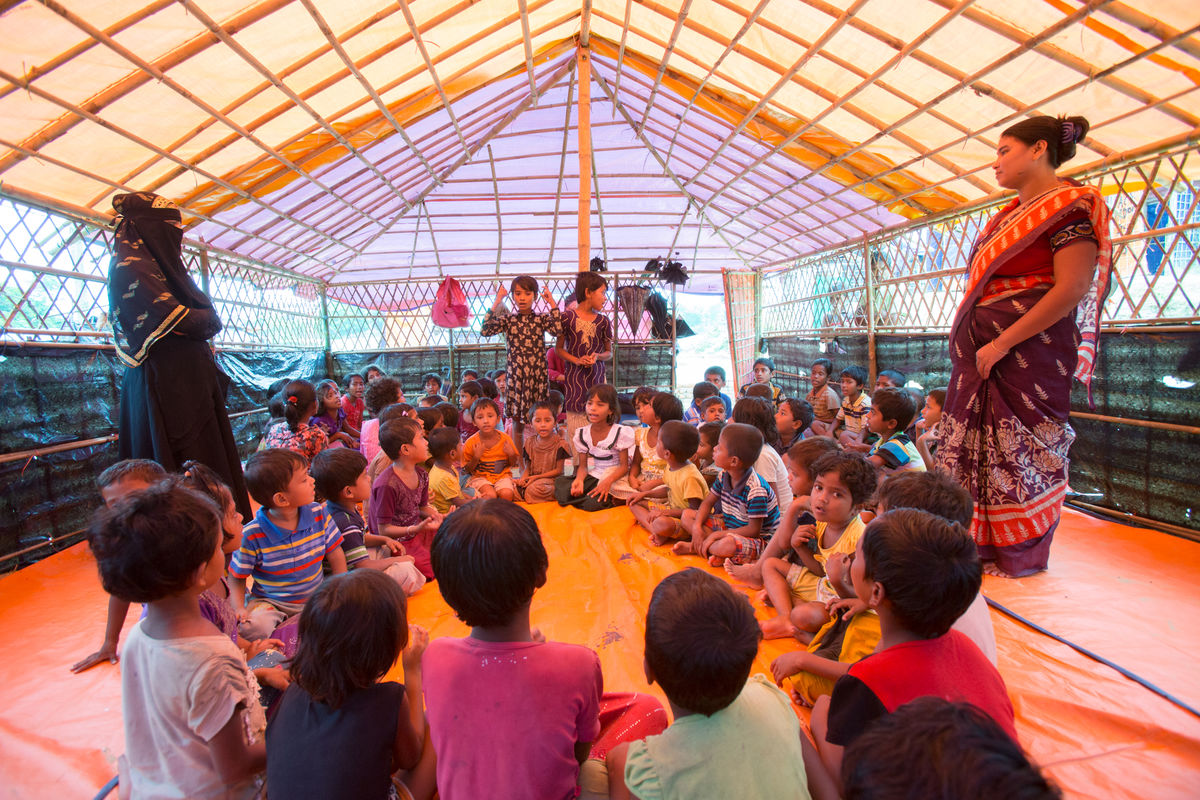This article was originally published by Center for Disaster Philanthropy.
More than 350 million people worldwide are impacted by disasters each year, according to the 2019 Global Humanitarian Overview. For these individuals, the effects of a crisis don’t fade away when the news crews and headlines stop coming. The impact can linger for years–even decades.
Despite this reality, research from the Center for Disaster Philanthropy and Candid found that nearly half of all philanthropic giving occurs in the immediate response and relief phase of a disaster. This leaves reconstruction, resilience-building and preparedness measures largely underfunded. As the scale of disasters increases, it is critical that donors consider long-term investment strategies to support affected communities.
At the Conrad N. Hilton Foundation, we are working to more consistently support communities affected by a disaster or humanitarian crisis and to fill gaps left by institutional donors. In late 2018, in addition to our immediate response and systems strengthening work, we committed a second round of funding to three ongoing situations: the multi-faceted crisis in war-torn Yemen; support for Rohingya refugee children in Bangladesh; and local economic development and recovery programs in Puerto Rico.
As crises are increasingly protracted, philanthropy must join us in recognizing the need to commit multiple rounds of funding to reach those most critically impacted.
Yemen is a particularly acute example of a prolonged, complex crisis in the modern world. Three years of heavily armed conflict has resulted in the collapse of health, water and sanitation systems for half the nation. A sharp decline in food imports has led to increased cases of acute wasting and starvation.

Given the gravity of the situation, the Hilton Foundation awarded a second round of funding, investing in two organizations working on the ground to provide emergency health services and food aid, the International Medical Corps and Mercy Corps.
There is no cookie-cutter approach to disaster funding. Across humanitarian crises, vulnerable populations, including women and girls, the disabled, the elderly or the very young, face unique challenges. In August 2017, the most recent wave of violence and persecution of the Rohingya people by the Myanmar government resulted in more than 625,000 additional individuals seeking refuge in neighboring Bangladesh within a four-month period. More than a year later, UNICEF estimates that 450,000 children ages four to 18 continue to require support and protective services along this border.
The distinct needs of children are often overlooked during times of crises or conflict. When the Rohingya refugee crisis intensified in 2017, the Hilton Foundation was able to play a gap-filling role by supporting BRAC to provide safe spaces for children and youth. In 2018, the Foundation committed a second round of funding to continue support for safe spaces and conduct further research into the specific needs of children in humanitarian situations, improving response efforts going forward.
Local organizations are often the first responders in a disaster, but are also most likely to continue supporting communities through later stages of the recovery process.
When Hurricane Maria touched down in Puerto Rico as a Category 4 storm in September 2017, it devastated the island’s infrastructure, causing cascading failures of energy, transportation, communications and water. The national response has been laggard and, more than one year later, many parts of the island are still struggling to recover.
Understanding that local organizations are often best positioned to understand and respond to the needs of their community, the Foundation invested our second round of funding in United Way of Puerto Rico (Fondos Unidos) and Programa de Educación Comunal de Entrega y Servicio to provide a variety of services, including economic development programs, educational services and rebuilding efforts.
With the current state of climate change, the increasing frequency, intensity and duration of disasters has become our “new normal.” As funders, we have a responsibility to understand the long-term effects of these trends on our partners to ensure our giving is reaching those who need it most.